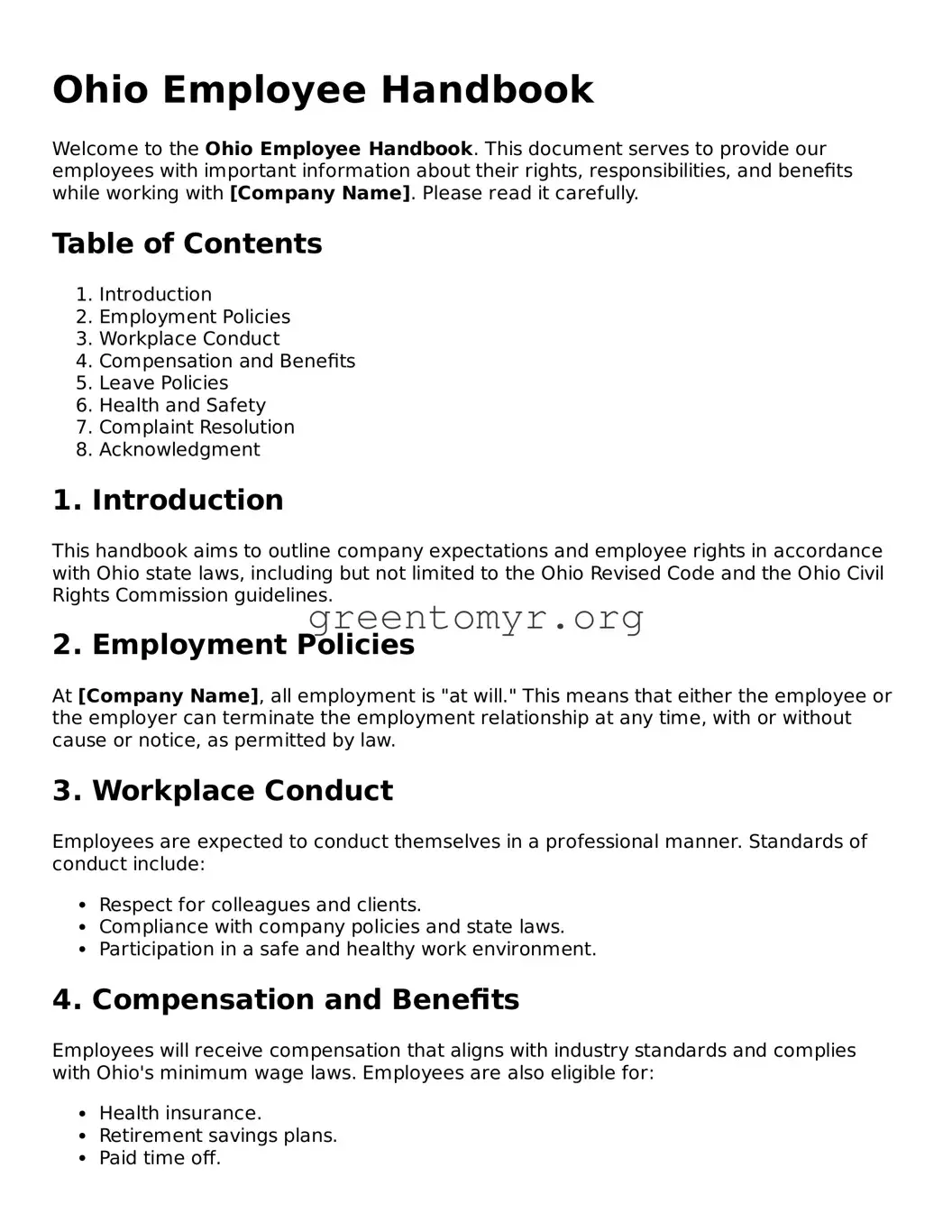Ohio Employee Handbook
Welcome to the Ohio Employee Handbook. This document serves to provide our employees with important information about their rights, responsibilities, and benefits while working with [Company Name]. Please read it carefully.
Table of Contents
- Introduction
- Employment Policies
- Workplace Conduct
- Compensation and Benefits
- Leave Policies
- Health and Safety
- Complaint Resolution
- Acknowledgment
1. Introduction
This handbook aims to outline company expectations and employee rights in accordance with Ohio state laws, including but not limited to the Ohio Revised Code and the Ohio Civil Rights Commission guidelines.
2. Employment Policies
At [Company Name], all employment is "at will." This means that either the employee or the employer can terminate the employment relationship at any time, with or without cause or notice, as permitted by law.
3. Workplace Conduct
Employees are expected to conduct themselves in a professional manner. Standards of conduct include:
- Respect for colleagues and clients.
- Compliance with company policies and state laws.
- Participation in a safe and healthy work environment.
4. Compensation and Benefits
Employees will receive compensation that aligns with industry standards and complies with Ohio's minimum wage laws. Employees are also eligible for:
- Health insurance.
- Retirement savings plans.
- Paid time off.
5. Leave Policies
In accordance with federal and state laws, employees are entitled to various forms of leave including:
- Family and Medical Leave.
- Sick leave.
- Vacation time.
6. Health and Safety
Keeping our workplace safe is a top priority. Employees must adhere to all safety protocols and report any hazards to [Safety Officer/HR Representative] immediately.
7. Complaint Resolution
If an employee has concerns regarding discrimination, harassment, or any other workplace issues, they should report them to [Designated Contact Person]. Every complaint will be taken seriously and investigated thoroughly.
8. Acknowledgment
Upon receiving this handbook, employees are expected to sign an acknowledgment form indicating that they have read and understood the policies outlined herein.
Thank you for being a part of [Company Name]. We look forward to working together to create a positive and productive environment.
